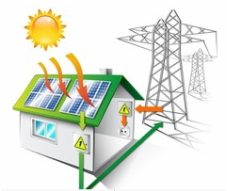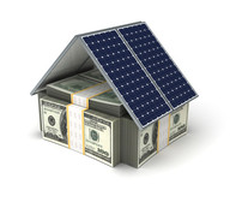 HOW DOES SOLAR WORK?
HOW DOES SOLAR WORK?
Solar panels are attached to the roof of a home or business or installed in the ground at the property. Sun rays hit the photovoltaic cells in the panels to create a Direct Current (DC) electricity. This electricity will pass through an inverter(s) to convert the power to Alternating Current (AC) so your home or business can use it. This current feeds through the utility meter and main service electrical panel. The property consumes the energy needed, while the excess energy feeds into the utility grid, adding credit to your utility account.
 HOW DOES NET METERING WORK?
HOW DOES NET METERING WORK?
The utility companies love solar power, as the energy generated from each system helps offset the energy crisis during the daytime and afternoon “peak hours” period and helps avoid costly outages. Once a solar system is granted PTO (Permission to Operate), the customer enters into a Net Metering arrangement with the utility company. Instead of only using the utility’s energy each month and being billed for usage according to the expensive billing rates, the utility company now sends a statement each month showing the “net” difference in electricity produced from solar and the property’s electricity consumption. For months when more power is generated than consumed, the utility statement will show a REC (Renewable Energy Credit). For months where the property consumes more power than is generated, the account statement will show a deficit. As both production and consumption of power varies seasonally, the credits and deficits carry or “roll over” a 12 month period. A customer may opt to pay for any excess consumption at the end of the month, or they may simply wait until the end of each 12 month period to allow for the consumption and production figures to balance out to zero or an account credit. Thus, solar property owners are able to eliminate expensive utility-provided energy and replace it with cleaner and cheaper solar energy.
BETTER SYSTEMS. BIGGER SAVINGS.
CALL US AT 800.761.9287 FOR A FREE SOLAR EVALUATION, OR
